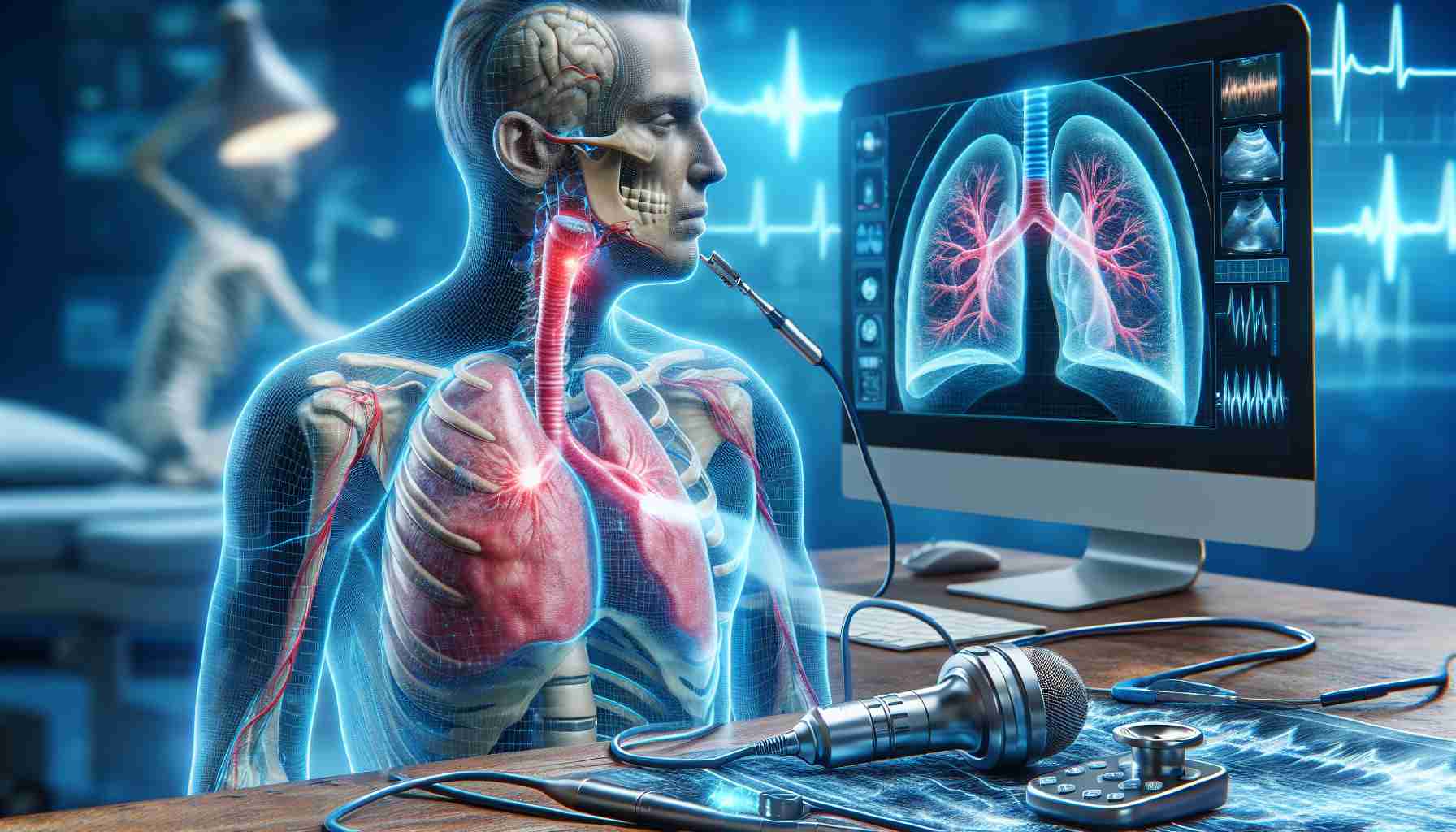Research conducted by a team of scientists from universities in Kaunas, Lithuania has revealed that low-frequency ultrasounds have an impact on blood parameters. The results indicate that the effect of ultrasounds on hemoglobin can improve the transport of oxygen from the lungs to the body’s tissues.
The study utilized 300 blood samples taken from 42 patients with lung diseases. The samples were exposed to six different modes of low-frequency ultrasounds at the Institute of Mechatronics, Kaunas University of Technology (KTU).
Changes in 20 blood parameters were recorded using blood analysis equipment in the laboratories of the Lithuanian University of Health Sciences (LSMU). Artificial intelligence, analysis of variance (ANOVA), nonparametric Kruskal-Wallis method, and machine learning algorithms were used to predict the impact of ultrasounds. The calculations were carried out at the KTU Artificial Intelligence Center.
Professors Vytautas Ostasevicius and Vytautas Jurenas from KTU claim that the ongoing research is related to blood platelet aggregation. The KTU team’s research revealed that the influence of ultrasounds on blood parameters extends beyond the number of blood platelets. It also affects red blood cells (RBCs), which can lead to improved oxygen circulation and lower blood pressure.
“During exposure to low-frequency ultrasounds, clustered RBCs separate into individual RBCs, whose hemoglobin molecules interact with oxygen across a greater surface area than the packed RBCs, thus improving oxygen saturation of the blood. The number of separated individual RBCs per unit volume of blood decreases due to the spaces between them, compared to packed units, reducing blood viscosity and impacting blood pressure,” explains Prof. Ostasevicius, the director of the KTU Institute of Mechatronics.
The scientists state that the impact of ultrasounds on hemoglobin in RBCs proved to be greater than the effect on blood platelet aggregation responsible for blood clotting. Their findings were confirmed by additional analysis conducted at the Molecular Cardiology Laboratory of LSMU.
“This means that low-frequency ultrasounds can potentially be used to improve oxygen saturation in the lungs of patients with pulmonary hypertension. With the ongoing COVID-19 pandemic, we see tremendous potential in further exploring the capabilities of our technology,” says Prof. Ostasevicius.
Partnership between Medical Scientists and Engineers
In medicine, high-frequency ultrasounds ranging from 2 to 12 MHz are used for both diagnostic and therapeutic purposes.
“The acoustic waves emitted by high-frequency ultrasounds have limited penetration depth into the body, which makes external tissues more exposed to high-frequency ultrasounds than internal organs. Low-frequency ultrasound wave propagation penetrates deeper into internal organs with a more uniform distribution of sound pressure,” explains Prof. Jurenas.
Ultrasounds have many applications in medical settings.
“For example, focused ultrasound waves are used to break up kidney stones and kill cancer cells. Could ultrasounds be used to activate certain drugs? Or to facilitate the delivery of antibiotics to inflamed areas?” says Prof. Jurenas.
The technology used in the aforementioned study is just one example of many successful partnerships between engineers and medical professionals. For instance, researchers from the KTU Institute of Mechatronics recently developed a frame for immobilizing patients undergoing Gamma knife radiosurgery at the Lithuanian University of Health Sciences Clinic.
“We believe that by utilizing knowledge from various fields, better outcomes can be achieved,” say the KTU researchers regarding interinstitutional and interdisciplinary collaboration.
FAQ:
1. What are the findings of the research conducted by scientists from universities in Kaunas, Lithuania?
Low-frequency ultrasounds have an impact on blood parameters, and the effect of ultrasounds on hemoglobin can improve the transport of oxygen from the lungs to the body’s tissues.
2. How many blood samples were used in the study?
The study utilized 300 blood samples taken from 42 patients with lung diseases.
3. What methods were employed in the study?
Artificial intelligence, analysis of variance (ANOVA), nonparametric Kruskal-Wallis method, and machine learning algorithms were used to predict the impact of ultrasounds.
4. What is the significance of the KTU team’s research?
The KTU team’s research revealed that the influence of ultrasounds on blood parameters extends beyond the number of blood platelets. It also affects red blood cells (RBCs), which can lead to improved oxygen circulation and lower blood pressure.
5. What are the potential applications of low-frequency ultrasounds?
Low-frequency ultrasounds can potentially be used to improve oxygen saturation in the lungs of patients with pulmonary hypertension.
6. What are other applications of ultrasounds in medicine?
Ultrasounds have many applications in medicine, such as breaking up kidney stones, killing cancer cells, and facilitating drug delivery to inflamed areas.
7. What other partnerships between scientists and engineers have been successful?
For instance, researchers from the KTU Institute of Mechatronics developed a frame for immobilizing patients undergoing Gamma knife radiosurgery at the Lithuanian University of Health Sciences Clinic.
8. How do scientists describe the collaboration between engineers and medical professionals?
The KTU scientists believe that by utilizing knowledge from various fields, better outcomes can be achieved.
Related Links:
Kaunas University of Technology (KTU)
Lithuanian University of Health Sciences (LSMU)
The source of the article is from the blog cheap-sound.com
